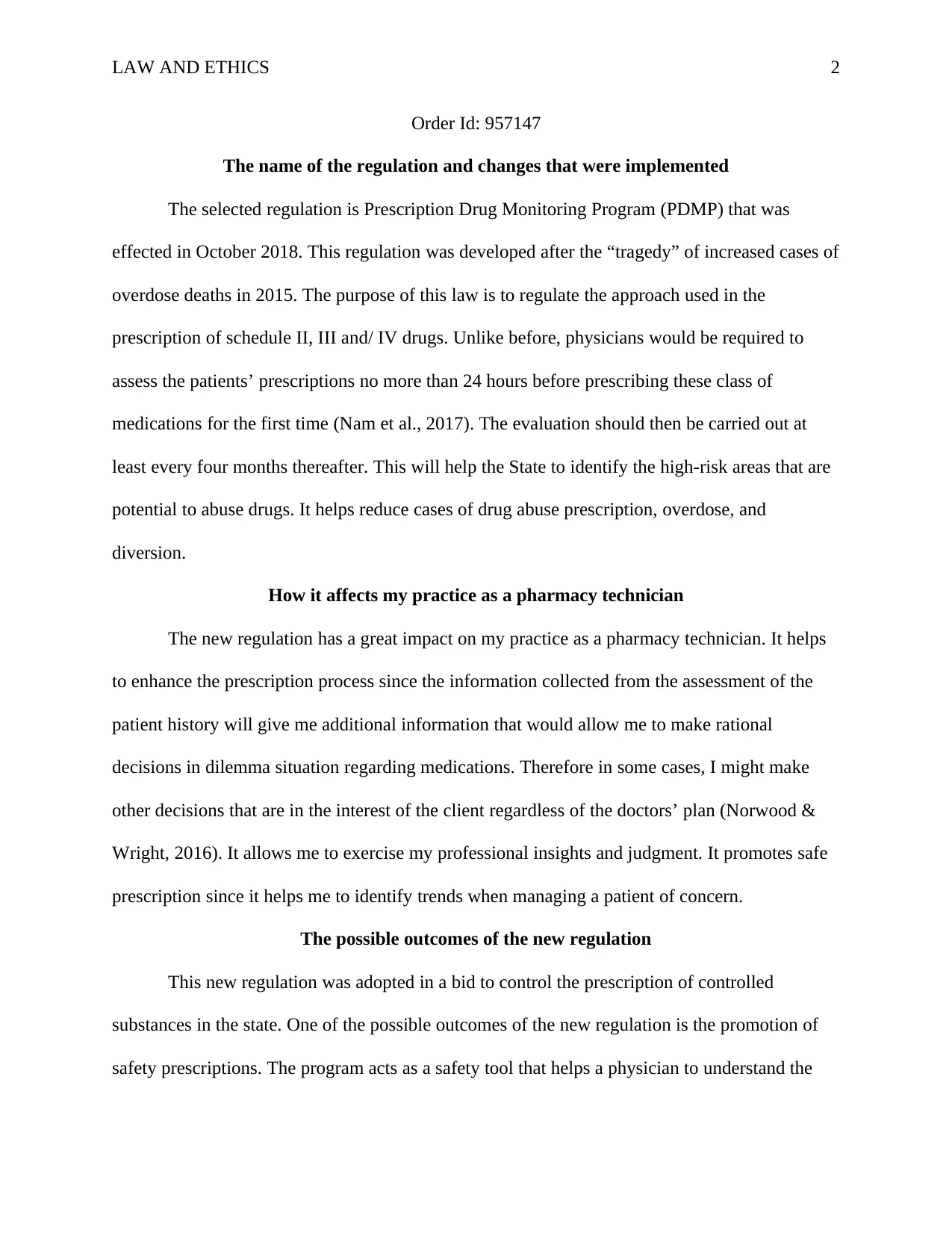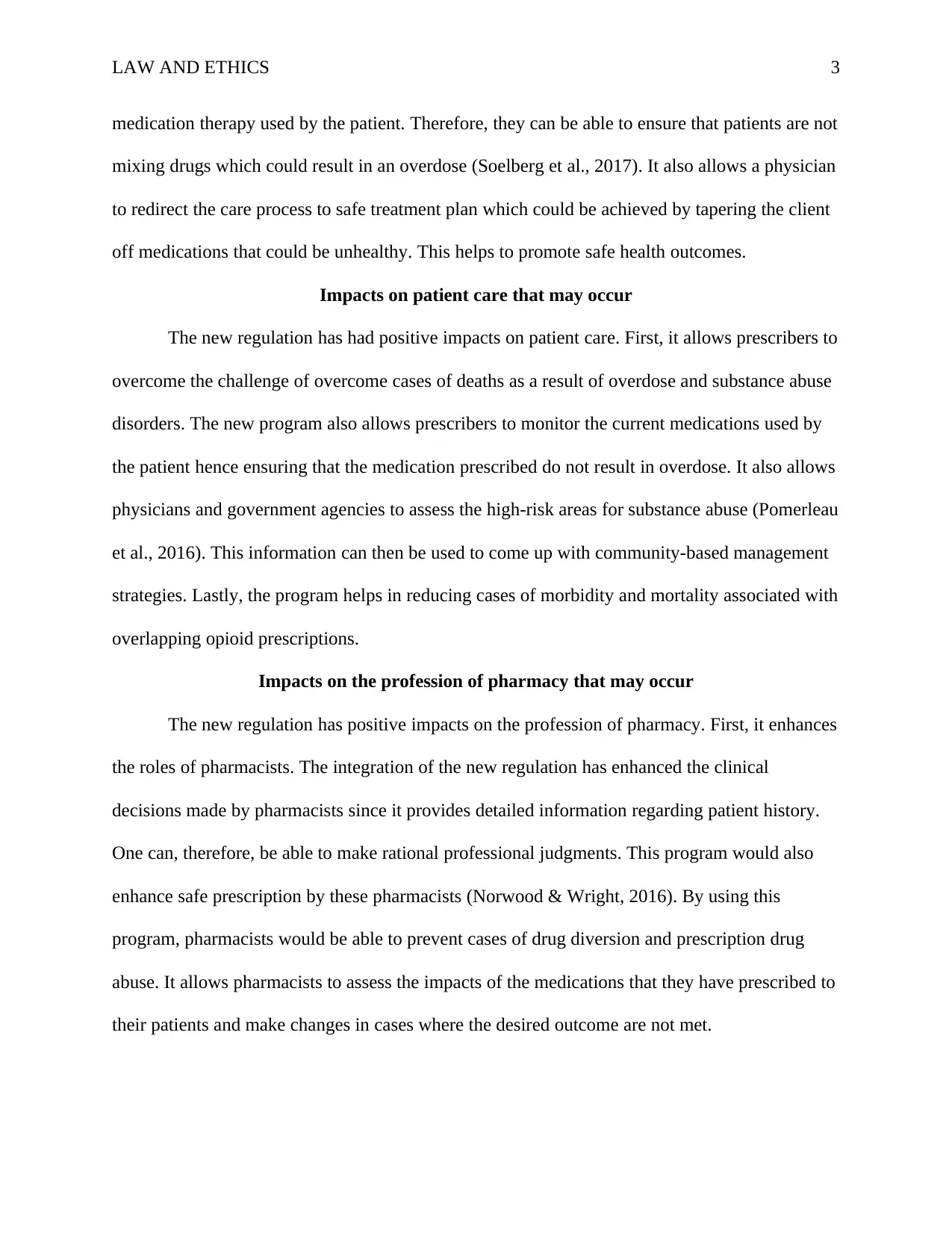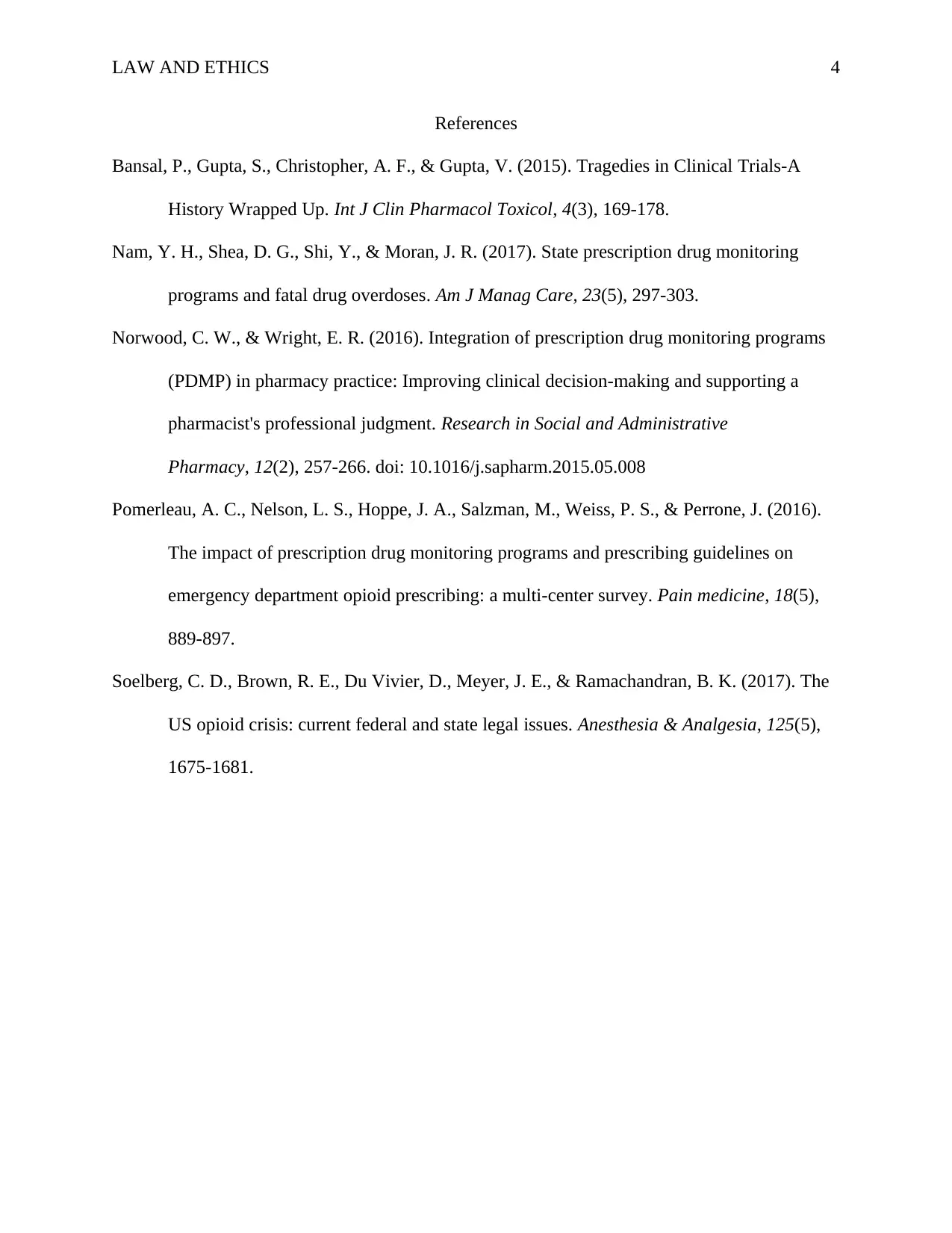Analysis of the Prescription Drug Monitoring Program (PDMP) Regulation
VerifiedAdded on 2023/01/19
|4
|950
|79
Report
AI Summary
This report analyzes the Prescription Drug Monitoring Program (PDMP) regulation implemented in October 2018, focusing on its impact on pharmacy practice, patient care, and the profession. The regulation aims to control the prescription of Schedule II, III, and IV drugs, requiring physicians to assess patient prescriptions. The report explores how this affects pharmacy technicians, enhancing their ability to make informed decisions and promote safe prescriptions. It discusses the positive outcomes of the regulation, such as improved patient safety, reduced drug abuse, and better management of high-risk areas. Furthermore, the report examines the impact on patient care, including reduced overdose deaths and substance abuse disorders, as well as the positive effects on the pharmacy profession, such as enhanced pharmacist roles and safer prescription practices. The report references several studies to support its findings and provides a comprehensive overview of the PDMP regulation's implications.
1 out of 4










![[object Object]](/_next/static/media/star-bottom.7253800d.svg)